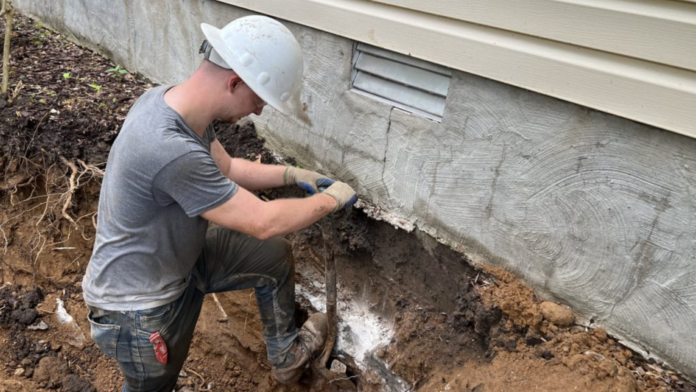Climate change, with its far-reaching effects, is not merely a matter of rising temperatures and extreme weather events. It also poses a significant, albeit often overlooked, threat to the very foundation of our homes. As temperatures fluctuate, precipitation patterns shift, and sea levels rise, the soil beneath our homes undergoes changes that can lead to structural damage. In this blog, we’ll delve into the profound impact of climate change on residential foundations, the signs of damage homeowners should watch for, the urgent need for foundation repair in Texas, and the adaptation measures necessary to safeguard our homes against the evolving climate.
Understanding Climate Change’s Influence on Soil Stability
The stability of a home’s foundation is intricately linked to the properties of the soil beneath it. However, climate change can disrupt this equilibrium in several ways. Increased temperatures lead to soil dehydration, causing it to shrink and crack. – Conversely, heavy rainfall events can saturate the soil, leading to erosion and subsidence. Furthermore, rising sea levels can exacerbate soil erosion in coastal areas, compromising the stability of foundations. The type of soil also plays a significant role; clay soils expand and contract with changes in moisture content, while sandy soils may erode more easily during heavy rains.
Signs of Foundation Damage Caused by Climate Change
Recognizing the signs of foundation damage is crucial for homeowners to address issues before they escalate. Common indicators include cracks in walls or floors, uneven floors, doors or windows that stick or fail to close properly, and gaps between walls and ceilings. These symptoms may signal underlying soil instability exacerbated by climate change-induced factors such as droughts, floods, and soil erosion. Additionally, homeowners in coastal areas may notice increased salt damage to foundations due to rising sea levels
The Importance of Timely Repairs and Adaptation Measures
Ignoring foundation damage can have severe consequences, including structural instability, reduced property value, and safety hazards. Therefore, prompt repairs are essential to prevent further deterioration and mitigate risks. Foundation repair specialists can assess the extent of damage and recommend appropriate solutions, including underpinning drainage improvements, or soil stabilization techniques. Additionally, adapting homes to withstand the impacts of climate change, such as installing proper drainage systems, using moisture-resistant materials, and elevating structures in flood-prone areas, can help safeguard against future damage
Strategies for Protecting Your Home’s Foundation in a Changing Climate
As climate change continues to intensify, proactive measures are necessary to protect residential foundations. Homeowners can take various steps to mitigate risks and enhance resilience. These include maintaining proper drainage around the foundation, installing gutter systems to manage rainfall runoff, planting vegetation to stabilize soil, and consulting with professionals to assess and address vulnerabilities specific to their property. In addition, investing in climate-resilient building practices, such as raised foundations and flood-resistant construction materials, can help future-proof homes against the impacts of a changing climate.
Conclusion
Climate change poses a multifaceted threat to residential foundations, necessitating heightened awareness and proactive measures from homeowners. By understanding the influence of climate-related factors on soil stability and recognizing the signs of foundation damage, individuals can take timely action to safeguard their homes, including seeking slab foundation repair when necessary. Moreover, investing in repairs and adaptation measures is crucial for preserving property value and structural integrity and ensuring the safety and well-being of occupants in an increasingly uncertain climate future. As we confront the challenges of a changing climate, prioritizing the resilience of our homes’ foundations is essential for building a sustainable and secure future.



















